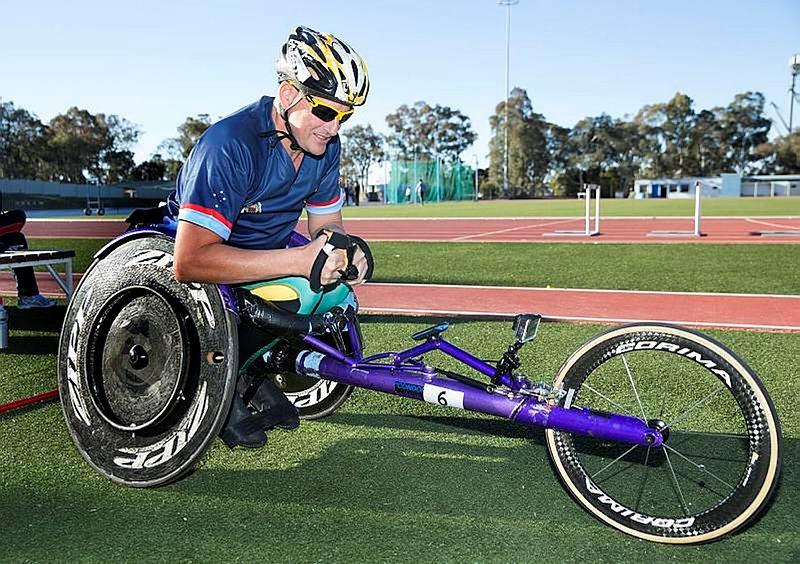The wonder of exoskeletons
Posted By Geoff Slocombe on July 21, 2015 @ 15:00
Despite the best efforts of commanders, military operations do result in fatalities and serious injuries. ADF service in Afghanistan since 2001 has sadly resulted in 41 personnel killed in action. A further 262 ADF personnel have been wounded. Some requiring amputations are permanently confined to a wheelchair as are others due to spinal cord injury and neurological conditions affecting gait.
While prosthetic limbs give amputees some walking mobility and manipulative options, what about those consigned to wheelchairs for life? Although stem cell research is offering hope for the future, are there any options available for those disabled veterans today?
At ASPI’s Future Force Structure Options for Army Conference on 25 June 2015, Chief of Army LTGEN Angus Campbell stated [2] the second of Army’s priorities—support for wounded, injured and ill ADF veterans—he would now be glad to know there are some options for wheelchair-bound veterans.
Exoskeletons are ready‐to‐wear, battery‐powered robots that are strapped over the user’s clothing, enabling individuals to achieve mobility, strength, and endurance not otherwise possible.
Development of biomechanical exoskeletons has been funded for both military and civilian purposes in recent years. The military seek to enable the combat soldier to carry heavier loads faster and longer. For example, Raytheon-Sarcos’s XOS2 suit allows users to lift [3] heavy objects at an actual-to-perceived-weight ratio of 17:1 i.e. a 255kg load only feels like 15kg to the wearer.
Asked about Australia’s research into this technology, the Defence Science and Technology Group (DSTG) responded:
‘Exoskeletons are emerging as a promising option for extending the range of performance and reducing the risk to Defence personnel in the conduct of their operational role. DSTG is tracking the development of those powered systems that could mature into practical solutions for the ADF but is not actively developing its own powered exoskeleton. However, DSTG is currently investigating passive exoskeleton technology for reducing the load burden of backpacks.’
In the rehabilitation sphere, bionic suits offer wheelchair users with lower limb disabilities assistance to stand up and walk again.
Permanent wheelchair users are at risk of developing numerous medical complications from extended periods of sitting. Research is establishing that by enabling them to spend more time standing, walking and exercising, they should gain significant health benefits—including decreased pain; improved bowel and bladder function; decreased body fat; better mental health; improved sleep and reduced fatigue; better cardiovascular performance; good maintenance of joint range; and a reduction in common abdominal problems and prescription drug use.
Rex Bionics (New Zealand and also now UK) pioneered the REX Robot that enhances the mobility of wheelchair users. It was founded in Auckland by two robotics engineers with first-hand experience of wheelchair users and their needs. One of their customers is Gareth Herridge, who has a C4 spinal Injury. He has said ‘it didn’t take me as long as I thought it would to learn how to use REX and when I moved the joystick and stood it felt quite natural. The main benefit to me is getting a full range of movement in my legs, I get a good stretch from REX when I move forwards, backwards and sideways’.
In 2013, Cyberdyne (Japan) released its fifth-generation Hybrid Assistive Limb HAL 5, a 10kg full body exoskeleton. It has received a global safety certificate for worldwide medical use, being the first powered exoskeleton to receive this certification. The system functions by sensing [4] bio-signals on the surface of the skin, causing the exoskeleton to mirror the user’s movement.
Seven years ago, US-based Matthew Tilford suffered a spinal cord injury that left him paralysed from the waist down. Ekso Bionics (USA) has a wearable bionics suit that enables him to stand up and walk over ground. ‘I noticed it was doing all the work for me,’ says Matthew. ‘It was just so natural where I could just stand there and all I had to do was lean left and right and shift my weight a little bit onto one foot or the other.’
Another US firm, ReWalk, has a personal system which is designed for all day use at home, at work, and in the community. Three years ago, retired US Army sergeant Theresa Hannigan lost the use of her legs as a result of her military service. Theresa, who uses the ReWalk, says that walking with the bionic suit is ‘very effortless.’
Modern exoskeletons are full weight bearing and produce improvements in walking speed, distance, fluidity, gait and balance.
Initially used in US trials as a training device in the presence of experts, clinical reports identify big improvements in patients after participating in just six weekly sessions with increasing time and decreasing assistance when walking in the device.
ADF veterans are achieving amazing physical performances, even while wheelchair-bound. Private Mark Urquhart (seen in image) competed in London’s 2014 Invictus Games. He said ‘The Games are important to me because competing is a challenge that takes my mind off the pain of the past, when I had my parachute accidents, which have confined me to a wheelchair.’ He competed in all the swimming events including freestyle and breaststroke, as well as all the track and field events including the relays, shot-put, discuss, javelin, drivers’ challenge, wheelchair basketball, wheelchair rugby, rowing and seated volleyball.
Defence’s Directorate of ADF Rehabilitation and Compensation (DRC) has the primary initial responsibility for reducing the impact of injury or illness through delivering rehabilitation programs, compensation and support for Paralympics sport.
Although suitable exoskeletons can cost $100,000 or more, wheelchair–confined veterans shouldn’t be denied the opportunity to regain independent assisted walking, with potentially excellent health benefits.
Article printed from The Strategist: https://aspistrategist.ru
URL to article: /the-wonder-of-exoskeletons/
URLs in this post:
[1] Image: https://aspistrategist.ru/wp-content/uploads/2015/07/20140813adf8588293_026.jpg
[2] LTGEN Angus Campbell stated: https://aspistrategist.ru/the-future-of-australian-land-operations/
[3] lift: http://www.army-technology.com/projects/raytheon-xos-2-exoskeleton-us/
[4] sensing: http://www.cyberdyne.jp/english/products/HAL/index.html
Click here to print.
